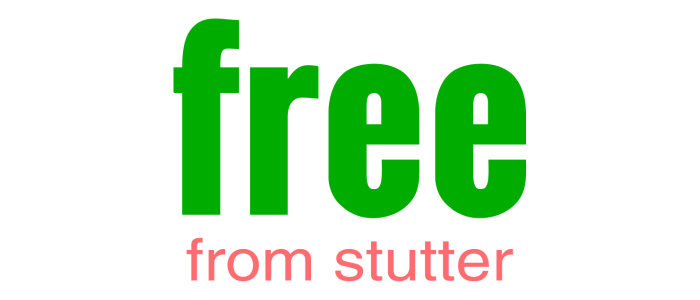Relaxation for stuttering
For people who stutter, speaking oftentimes feels like a huge effort of getting through it. It feels like physical and emotional tension draining our energy. Yet, it can and even should be relaxing. Let's explore how we can bring relaxation into our speaking!
Usual way
I want to start by saying that we usually try to relax in general by doing breathing exercises, meditation, all sorts of self-talk.
That's beautiful but here we're talking about the very act of speaking. We want to feel what's happening inside that moment - when we're speaking, when we're interacting. That exact moment should be the source of relaxation. We should find relaxation in our speaking at that point. Not before or after.
It's not like I'm trying to relax and then go! I'm getting tense and then after speaking I'm feeling exhausted trying to recoup, trying to gather some energy back.
First sound
The first sound is huge. It determines how you say the whole phrase. Because it gives a signal to our body, to our brain of how we feel at that moment.
We're stepping on the first sound, we're present. We belong here and we go with the airflow. The first sound - that's where we already want to feel that the speaking is relaxing. That's where we start relaxing.
So, to feel that let's play with a couple of exercises and we'll be saying a phrase, "Excuse me, where's the bathroom here?"
1) Baloon exercise
The first thing I want you to do is the balloon exercise. We're getting tense with our body and then we release that tension - we're just relaxing.
This is a very basic exercise. We want to feel how we go from tension to relaxation.
2) Balloon exercise on the thumb
Now we'll be playing with the hand stuttering technique.
You're getting tense and then you're pressing gently with your thumb on the thigh to launch relaxation. Please do that several times, we really want to feel our body uptight first and then launching the relaxation with the thumb.
3) Balloon exercise on the first sound
As we're saying the phrase, "Excuse me, where is the bathroom here?" let's start with "e" in "excuse me" getting tense then relaxing by pressing your thumb on the thigh. Then you drop your hand and relax.
4) Effortless start
As you got relaxed I want you to stay in that relaxed state. You can also relax your jaw muscles a little bit to feel your mouth is a little bit open. Then from this state, we're kind of waking up on the first "e" in "excuse me."
So, you're waking up with your body on the first syllable and then feel with your body how you land to the stressed syllable in "Excuse me."
5) Effortless start with the thumb
We're waking up again, but now we're using our fingers on the thigh. I want you to feel very relaxed, loose, heavy. And we go up and down saying "Excuse me" using three fingers on the thigh.
Connections
By connections, I simply mean that we want to step on the first sound, and then we want to feel the airflow, the continuous airflow in our phrase. And let's play with the second part of our phrase, "Where is the bathroom?"
What usually happens - and we don't quite notice that - we have micro-breaks even within the phrase that we're trying to say as one breathing out.
1) Throw it like a ball
We want to connect "where-is" as the first connection. I want you to feel that we don't finish the airflow on "r." Feel that "r" goes to "is" and becomes "r-is."
I suggest that you imagine you're throwing it to me like a ball. Try to feel you go up and down engaging your body. Articulating the consonants clearly, but going from one vowel sound to the other.
The same way we connect "is-the" and "is-the-bathroom." Throw it as a ball engaging your body.
2) Use fingers on the thigh
Say the phrase "where is the bathroom" feeling those connections and using five fingers on the thigh.
You can also try playing with fewer fingers. Say the phrase with four fingers. And even with three shortening "where is" to "where's."
That's how the training speech develops. We use fewer fingers getting support in the stressed syllables.
One of the functions of the hand technique and using fingers is to put those connections together.
As you can notice, when we feel the airflow, when we feel the connections, when it's flowing we remove the physical tension and it feels relaxing.
Structure
The structure is, first of all, how we split our speaking into pieces. In other words, it's how we put the pieces together into the actual speaking.
The usual structure is trying to say as much as we can as fluently as we can. And this structure turns our speaking into an endless effort. We're trying, trying, trying to say it in one go. We're not quite making pauses because we're interrupted by stuttering where we don't mean to.
We really want to make sure that we're making those splits and pauses the way we want, the way we decide, the way we choose.
In our case, a good split probably would be, "Excuse me! / Where's the bathroom here?"
And of course, there is no right or wrong splitting. You can split your speaking into pieces the way you want. But we want to make sure that we're not rushing to say as much as we can. We take a pause here because we made a point right before that. Like in this case, we're saying, "Excuse me" that's the point we're making. We've attracted the attention of another person and then we say, "Where's the bathroom here?"
Is such structure relaxing? Of course!
When you're not rushing anywhere, when you're saying your phrase, you step on the first sound, you go with your continuous airflow, you make a point. You automatically create a space for a pause. Then you again step on the first sound, you go with your airflow you make another point. And there is another pause.
This is the structure that makes speaking relaxing and effortless. This is the structure I want you to play with, starting with these two simple phrases.
Acceptance
So, if we step on the first sound, if we feel the connections, continuous airflow, if we split our speaking the way we want, if we make the pauses, if we engage your body, eye contact, if we use our hand and we feel the injection of relaxation all the way as we're saying phrase after phrase, what else do we need?
Well, I want you to come back to this imaginary situation. You're in the restaurant, you want to go to a bathroom, you stand up, you walk towards the waiter, and that's the moment.
As long as we're feeling that we have to say that "Excuse me, where is the bathroom?" at a high pace feeling just two stresses and that is the only space that we're giving ourselves - we're not going to feel relaxed.
We are going to feel emotional tension, anticipation, and anxiety. Because we know for sure that we're not going to squeeze ourselves, our phrase into that short space.
So, we feel that tension because we're not allowing ourselves to take up space in the first place.
And why aren't we allowing ourselves to take up space?
Because if you go deep, deep, deep inside you will get to the invisible 90% of stuttering and it comes down to feeling bad about it.
We feel shame, we feel the desire to hide it.
That is why the next thing you see in the Free From Stutter Program for example after the fundamentals is the disclosure module. We want to master the disclosure. We want to be able to disclose to anybody, close person, friend, colleague, boss, we want to be able to be open about what we're doing. And the training speech is simply a manifestation of the fact that you stutter and you're doing something about it.
But you can do that. You can develop the training speech. You can develop a new emotional state of being truly present, truly relaxed, truly connecting to another person...
only when you accept who you are.
When you give yourself permission to be who you are. And yes, right now, you stutter. There is nothing to be ashamed of.
And this is a muscle, this is a skill we want to start developing step by step.
Don't be ashamed, try to explore the feelings when you're doing those exercises.
Don't expect fluency from yourself. Don't set those unrealistic expectations of saying it fast and "normally" like everybody else. Try to focus on your feelings at that point. Try to take as much space as you need and feel good about it.
Feel good about yourself. Congratulate yourself for taking action. Congratulate yourself for not hiding, for not avoiding.
Congratulate yourself on being who you are.
Thank you so much for reading and watching! I'd love to know how you see relaxation for stuttering. What does it mean for you?
Don't expect fluency from yourself. Don't set those unrealistic expectations of saying it fast and "normally" like everybody else. Try to focus on your feelings at that point. Try to take as much space as you need and feel good about it.
Feel good about yourself. Congratulate yourself for taking action. Congratulate yourself for not hiding, for not avoiding.
Congratulate yourself on being who you are.
Thank you so much for reading and watching! I'd love to know how you see relaxation for stuttering. What does it mean for you?
Your roadmap to freedom from stuttering
I've prepared a practical course where I'll share with you how stuttering works and what we can do about it.

Develop the right strategy with stuttering
I'll see you inside!
DISCOVER NEXT
CHOOSE YOUR MEDIUM
"It doesn't matter
how slowly you go
as long as you don't stop."
- Confucius
Every person who stutters
can truly enjoy speaking
can truly enjoy speaking
For speech therapists, people who stutter, and parents.
Solutions
